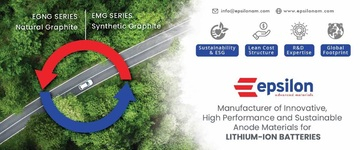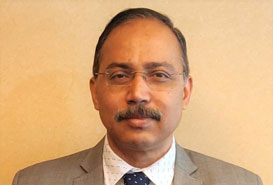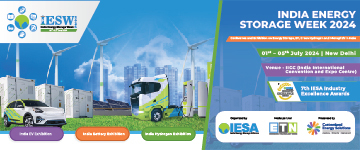Giant strides in the renewable energy sector
Despite a heavy setback caused by the COVID-19 pandemic, the RE sector is making a gradual turnaround. In an interaction with Jatindra Nath Swain, Chairman and MD – Solar Energy Corporation of India Ltd, Ashok Thakur, Chief Editor – ETN, gains insights into the management of today's most dynamic sector.
Could you explain the measures taken up by SECI for timely implementation of solar power projects already awarded, especially considering the impact of COVID-19 on the supply chain?
SECI is closely monitoring the progress of all projects and attempting to address difficulties being faced by developers expeditiously. Since many projects are experiencing difficulties due to COVID-19 lockdown, a time-extension of two months has been provided by MNRE to ensure that developers are not unduly penalized. Besides, major issues are being flagged and interventions from the highest level are being sought to streamline work execution. Further, time extension to developers will also be given.
It is clear that rooftop solar is the hardest hit. What is the impact on large and medium-scale grid-connected solar power projects?
Rooftop solar developers who are executing the projects are facing roof-accessibility constraints and delays in PPA signing with building owners/occupiers, due to the lockdown. The large-scale and medium-scale ground-mounted projects are also facing problems in acquiring land, in material supply, and in mobilising manpower. After the lifting of lockdown they are slowly coming back on track. Many of these may see a delay of 4-6 months in commissioning. Even inter-state transmission lines (ISTS) under execution are getting delayed and MNRE has granted suitable extension. Further facilitation will be done as per merit and requests.
Solar installations in the country stood at 36.5 GW as of March 2020. What has been the impact on SECI tenders and response to request for selection (RfS) amid the lockdown?
SECI has endeavoured to maintain the momentum in tendering activities to the most feasible extent. Tender for 2.5 GW solar capacity was issued in April. Pre-bid meetings are being held in VC mode. Reverse auction for 400 MW RTC tender was successfully conducted in May, yielding an excellent first-year tariff of `2.90/kWh. SECI has awarded 1.2 GW solar capacities in April and recently another 6 GW of solar capacity under manufacturing- linked solar tender. So much of the activities are on track.
For certain activities such as bid submission, the deadlines have been extended suitably to account for lockdown related constraints faced by prospective bidders.
SECI is working to set up its own generation plants to showcase new and innovative technologies.
Could you share the steps taken up by SECI to ensure business as usual despite the COVID situation?
SECI has endeavored to maintain the momentum in tendering activities to the extent feasible while complying with government directives on work-from-home rule. Remote working has been permitted and normal activity has been ensured. SECI's tendering system was already 100 percent online. Now pre-bid meetings
and consultation are also being taken up through online mode.
A stakeholder consultation is being planned to identify the way forward to provide flexible and firm RE power with a high plant load factor, in virtual mode.
In a historic moment for SECI and MNRE, we saw the conclusion of the e-reverse auction (e-RA) for 400 MW RE projects with round-the-clock (RTC) supply at a record first year tariff of `2.90/kWh; also the 1.2 GW Peak Power tender
The specific requirements of Discoms need to be identified to develop a bouquet of products involving storage.
which achieved a levelized tariff of `43/kWh earlier in January. Could you elaborate on some of the other significant tenders in the pipeline?
The levelized tariff of `3.97/kWh (weighted average) and `3.59/kWh (`2.90/kWh first year tariff), under the peak power and RTC tenders respectively, are excellent tariff discovery and most of the Discoms have shown interest in this. SECI will continue to bid more such tenders while continuing to tender out plain solar and wind tenders as per RE trajectory. Currently, SECI is working to address intermitting and grid-stability related issues of RE by providing flexible and firm power. As I have mentioned earlier, we are holding a stakeholder consultation in June to get wider views on the subject.
At present, apart from the regular solar and wind tenders, several innovative tenders have been issued, the major ones being 1.2 GW wind-solar hybrid and 5 GW RE complemented with thermal power on round-the-clock basis. SECI has also brought out a substation specific 2.5 GW solar bid in Karnataka.
Would it be right to say that a majority of future RE tenders will have a storage component attached?
Energy storage has multiple use points and considering the increasing share of RE in the power system, the importance of storage facilities will definitely increase. However, the feasibility of their large scale deployment with RE generation projects or as pooled transmission assets will depend on the cost of such storage projects. Moreover, specific requirements of Discoms need to be identified to develop a bouquet of products involving storage. However, it is clear that the presence of storage in RE tenders will continue to increase.
What are your thoughts on the tariffs being achieved in such tenders?
Recent bidding results have been encouraging and if the storage costs keep coming down as projected we may see good results in future. Although tariffs depend on multiple factors, yet we expect prices to remain competitive enough to be saleable.
SECI is already in commercial business trading for about 11,500 MU of RE power and with a power purchase agreement of over 32 GW of RE power.
What are your comments on the proposed National Renewable Energy Policy in the Electricity Act?
The National Renewable Energy Policy being proposed by the Ministry of Power is expected to give a new thrust to RE and bring stricter enforcement of renewable purchase obligations across States. As RE is getting more economical and with steps being taken to address intermittency/availability issues, we are confident that RE will emerge as the preferred electricity source in the times to come.
Please shed some light on SECI's decarbonization efforts through hydrogen-based options.
We are under discussion with industry players and we see RE produced hydrogen (green hydrogen) not only as an energy storage but also an agent to decarbonize petroleum refining, fertiliser, and steel industry. We will take steps to enter into the segment at an appropriate time when the technology evolves to be techno-commercially viable in Indian conditions.
What are your thoughts on reducing Discom risks, considering the current issues faced by them?
Discoms face multiple challenges in current times and as a power procurement intermediary, SECI has operational dealings with most of them. We are getting payments from most Discoms without major delays, and till date SECI has been making payments to developers on time. The recent order from the Ministry of Power on compulsory operation of letter of credit for purchase of RE power has been a big help in this regard. We understand that a significant portion of Discom problems stem from subsidized power to farmers and SECI is advocating solarization of agri-power to reduce the burden on Discoms.
We have heard that SECI is planning to enter commercial business and set up its own generation projects. Can you share more details about these plans for our readers?
SECI is already in commercial business trading for about 11,500 MU of RE power and with a power purchase agreement of over 32 GW of RE power. In addition, SECI is working to set up its own generation plants to showcase new and innovative technologies. Planning is being done to set up projects in Andhra Pradesh, Chhattisgarh, Uttarakhand, Jharkhand, Lakshadweep etc. and these are under consideration of the respective state government administrations.














